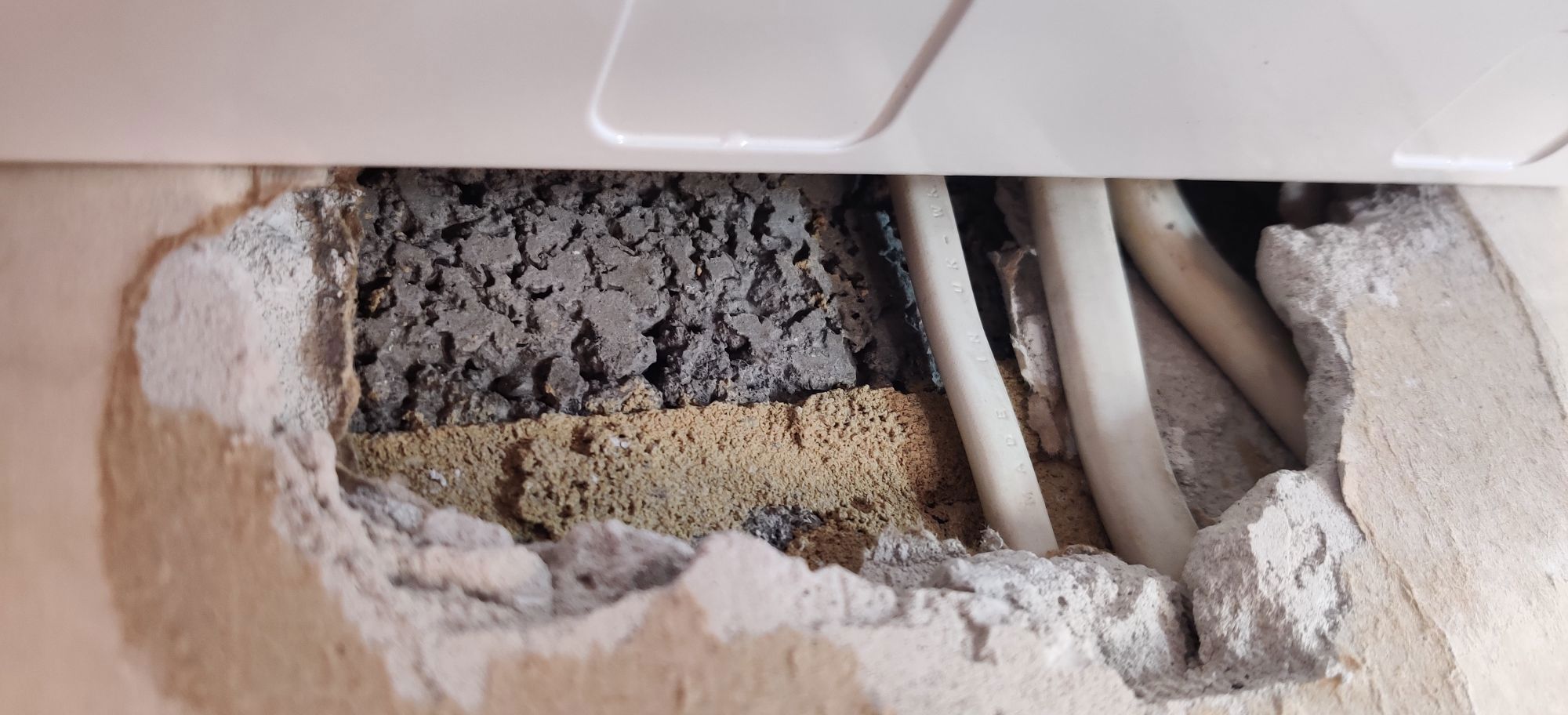I've had a new consumer unit/fuse box fitted, which is a different shape to the old one. I now have some repair work to do around it and I'm unsure of the approach.
Here are some images to show the situation (the hole is about 15cm wide by 6cm (down from the bottom of the unit). The plasterboard is 0.5 inches thick:




You can see that the construction is breeze block, a small gap, cables that can move around, plasterboard, (maybe a skim of plaster) then paint.
I'd like to make it good and have some ideas about how to approach this:
- It has been suggested that I just fill in the whole space with poly-filler or some similar generic filler.
- Another approach is to try and place a new piece of plasterboard in and bind it to the old.
- Perhaps to do this, I should excise even more of the existing plasterboard.
- I have more of the paint that was used for the walls.
I have these concerns though:
- You can see 3 cables in the image through the hole. I'd like to leave these free to move around to make it easier to install and modify future circuits/cabling from the consumer unit.
- The hole goes underneath the back of the consumer unit and so I think any fix needs to go up and behind the consumer unit by a few mm (possibly more but that is making it harder). For this I could loosen up the screws holding the consumer unit in place with the power off, but not much more than that.
- The edges of the current hole have broken and loose bits of plaster that are held in place by the backing paper.
- The paint has a finely pattered texture (shown in the 4th picture). This may be the texture of the plasterboard or perhaps a thin skim of plaster that went over it or perhaps it is the natural texture of the paint. I'm hoping for a finish that looks natural.
- Besides the hole itself, there is a region of whitish paper with some drill holes in it that needs preparing in some way before painting and also the edges of the paint need preparing in some way. Perhaps this requires a skim of plaster, but I don't know what kind.
I suspect that my hole in the wall problem is fairly common and even with the interaction of the electrics, people must have hade to deal with this many times. Could someone advise me on how to approach this please? I'm in the UK in case that affects anything.
